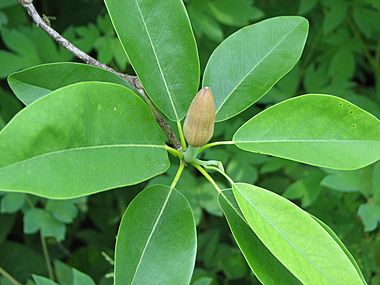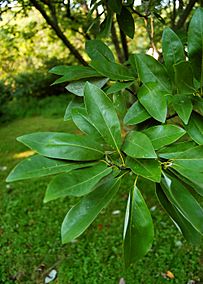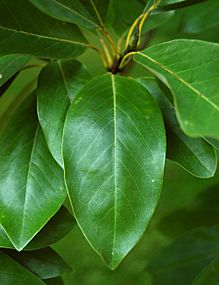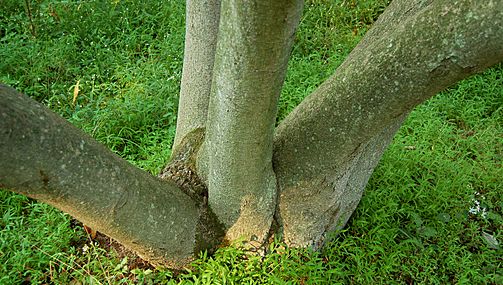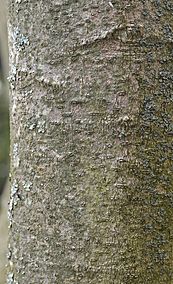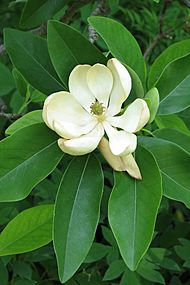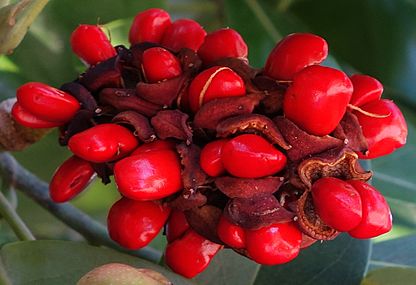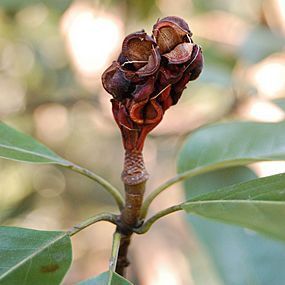Magnolia virginiana facts for kids
Quick facts for kids Sweetbay magnolia |
|
|---|---|
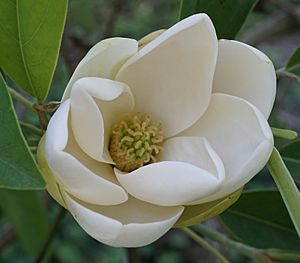 |
|
| Magnolia virginiana var. australis flower, Arnold Arboretum of Harvard University, accession #1275-80*A | |
| Conservation status | |
| Scientific classification | |
| Genus: |
Magnolia
|
| Species: |
virginiana
|
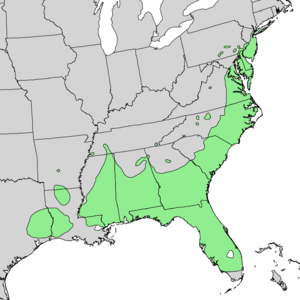 |
|
The Sweetbay Magnolia (Magnolia virginiana) is a beautiful tree from the magnolia family. It's also known as sweetbay, laurel magnolia, or swamp magnolia. This tree was the very first magnolia to be officially named using modern science rules. It's so important that it's the main example for all magnolias, and even for all flowering plants!
Contents
Naming the Sweetbay Magnolia
The Sweetbay Magnolia was one of many plants described by a famous scientist named Carl Linnaeus. He was the one who created the system we use today to give scientific names to all living things.
What the Sweetbay Magnolia Looks Like
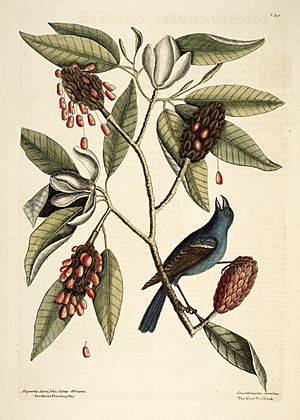
The Sweetbay Magnolia is a tree that can grow up to 30 meters (about 100 feet) tall. It lives in the lowlands and swamps along the Atlantic coast of the eastern United States. You can find it from Florida all the way up to Long Island, New York.
Whether the tree keeps its leaves all year or loses them depends on the weather. In warmer southern areas, it stays evergreen (keeps its leaves). Further north, where winters are colder, it might be semi-evergreen or deciduous (loses its leaves).
Its leaves are about 6–12 cm long and 3–5 cm wide. They are simple, meaning they don't have lobes or divisions. The tree's bark is smooth and gray. If you smell the inner bark, it has a mild scent, a bit like the spice bay laurel.
Flowers and Fruit
The flowers of the Sweetbay Magnolia are creamy white and quite large, about 8–14 cm across. They have 6 to 15 petal-like parts. These flowers have a very strong vanilla scent. Sometimes you can smell them from far away!
After the flowers, the tree grows a fruit that looks like a cone. It's 3–5 cm long and turns pinkish-red when it's ready. This fruit splits open to let out the seeds. The seeds are black but have a thin, bright red coating. This red coating attracts fruit-eating birds. The birds eat the seeds, digest the red part, and then help spread the seeds when they poop them out.
Growing Sweetbay Magnolias
People often plant Sweetbay Magnolias in their gardens and parks. They are popular because of their large, beautiful, and sweet-smelling flowers. Their leaves are also very attractive and stay clean. Plus, these trees grow quite fast! In warmer places, people especially like them because their leaves stay green all year.
The first Sweetbay Magnolia to be grown in England was sent there in 1678 by a botanist named John Banister. It flowered for Bishop Henry Compton. Even though it was the first, a larger, evergreen magnolia called the Southern Magnolia (M. grandiflora) soon became more popular.
Scientists have also mixed the Sweetbay Magnolia with other magnolia types. This is called hybridizing. They do this to create new kinds of magnolias with different features. Some of these new types even have special names.
Gallery
See also
 In Spanish: Magnolia virginiana para niños
In Spanish: Magnolia virginiana para niños



